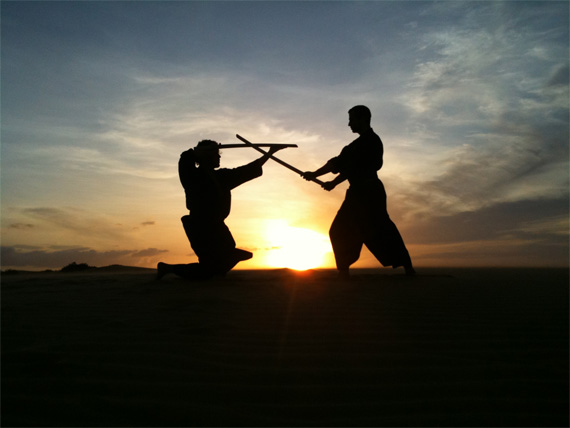In this chapter, we explore another Principle of Design.
Which is BALANCE. This is a key point in life that we all wrap our
perception around. From everyday activities, to daily career assignments
we look to balance not to IMBALANCE.
U don't sit in an uneven chair an say, "OK this is kool, I can dig it!"
U will either straighten the chair out to level it, or get a new one.
So with in Art&Design you look for a sense of EQUILIBRIUM in your projects,
because its subconsciously embedded with in us.
Which is why there are many levels of Balance with in designs and
artwork to create new point of views an different visions,
while keeping them balanced. So some artist will try to create an
imbalance piece on purpose, to express an uneasy tone,
or curious thought of "WHY?" does this artwork not seem RIGHT.
Here's some examples of Balanced work, to Imbalanced work.
In (A) & (B) I'll let you figure out which one is Balanced an Imbalanced.
 |
| EX:-A- Balance Sphere and Cube. Digital image. Visualphotos.com. Web. <http://www.visualphotos.com/photo/2x2648314/Computer_Art_Image_of_Cube_and_Spheres_Balanced_on_CYB20073.jpg>. |
 | |
| EX:-B- Awkward. Digital image. Blog.outhousestudios.net. Web. <http://outhousestudios.net/blog/fieldfittinglrg.jpg>. |
Thru Horizontal & Vertical Placement, within painting an designs the balance an imbalance
is shifted to alter our view on the artwork to emphasis what the artist or designer is trying to convey there meaning or interpret there artistic view to there audience.
Also forms of balance is ASYMMETRICAL, SYMMETRICAL or
BILATERAL SYMMETRY.
As you can see in (C) this is a form of symmetrical balance, where the artwork
is mirrored by the left an right. As to be a perfect over-all picture.
An with in (D) is a good example of asymmetrical balance, where the piece is NOT
mirrored but more of realistic as seen where not everything nature is completely alike from Left&Right side. Asymmetrical means different on both sides.
 |
| EX:-C- Garden Risen. Digital image. Idevelop.ie. Web. <http://www.idevelop.ie/igarden/images/spaceball.jpg>. |
 |
| EX:-D- Balanced Rocks. Digital image. Gatlineducation.com. Web. <http://www.gatlineducation.com/demo/ResInteriorDesign/images/L11-03.jpg>. |
The main are where you'll find most symmetrical or STATIC, is with in Architectural Designs. To create perfect or close to perfect balance with in a landscape or building.
Which also highlight another form of balance, which is by VALUE&COLOR.
Even thru negative value as to reverse lighting an show the color side as negative darkness.
but, formulated to show balance with in the design, Most form of using this is called SILHOUETTE. Where the main focal points of interest are darkened or shadowed in away where just there outline form is visible against a colorful or brighten background.
As shown in (E).
Another form of balance is by TEXTURE & PATTERN , like thee example shown in (F).
Which is a form of balance I can see being used a lot in Fashion Design an Interior Design.
 | ||
| EX:-E- KungFu at DUSK. Digital image. Picturecorrect.com. Web. <http://www.picturecorrect.com/wp-content/uploads/2009/11/silhouette-photography2.jpg>. |
 |
| EX:-F- Plaid & Dots. Digital image. Corporette.com. Web. <http://images.thesartorialist.com/photos/2249plaiddotsDetailWeb.jpg>. |
No comments:
Post a Comment